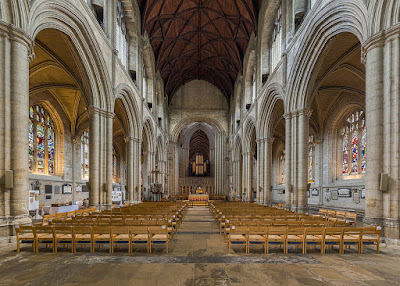The Ure near Thornborough
The River Ure in Yorkshire had, along
with the Swale, a spiritual and ritual significance equivalent to the Thames
and the Stonehenge Avon in southern Britain. Several henges are found on
high ground along its valley, many now little more than unexcavated cropmarks.
The Thornborough Henges are an exception. Three henges, which possibly
represent Orion’s Belt, were dug from gleaming white gypsum and would have been
a focal point for a vast distance all around. The Devil’s Arrows standing
stones are a little further downstream near the confluence with the Swale.
The central Thornborough Henge
The Ure is sourced in the Yorkshire
Dales and flows through the lowlands after it joins with the Swale, where it
changes its name to the Ouse, and flows through York and eventually reaches the
Humber Estuary, making it one of the most significant rivers of northern
Britain. Ure and Ouse may have the same etymological origin.
The Humber Estuary
Rivers were considered sacred in
Neolithic and Bronze Age times and this belief survived in various forms until
modern times. The River Avon is believed to have formed part of a processional
route to Stonehenge, linking the living with the dead or the physical world
with the spiritual world. Ritual offerings and the bones and ashes of the dead
were deposited in the water, which represented a liminal boundary between worlds.
Rivers were the arteries of the land, much like the arteries of the body, and
water was a life-giving essence which formed a key part of rituals. The Ure, which
means ‘Holy River’ in ancient Celtic, was probably a central part of ritual
life to the people of northern Britain, although four thousand years of time
has largely eradicated all physical traces of this.
Ripon Cathedral
The spiritual traces however, remain.
Several now-ruined abbeys were built along the river’s valley, and the
cathedral at Ripon is situated on the banks of the Ure. Ripon has a particularly
powerful sense of peace which I never normally feel in an urban environment,
and I felt that same powerful essence at every place I visited along the river.
I watched a barn owl flying along the banks at twilight and wondered if that
was a sign that, just as the river flows on forever, the spiritual qualities it
reflects also do the same.













